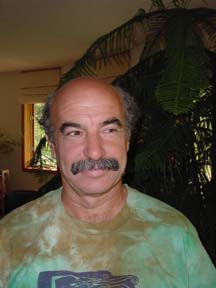The previous two posts would indicate to a sane person that there was a big problem. I mean a really big problem. Most of the press coverage I'm finding for climate change is coming from the UK, and parts of the European Union, for instance Reuters. Here's one from our home turf, and it's about the silence of the press. If Global Warming findings made it to the front page of US newspapers, stated in a way that the majorityof the public could understand, our dismal, dreadful, and dire ignorance of the course we're on might start to fade. Why isn't that happening?
Another find on Common Dreams
- - - - - - - - - - - - - - - - -
Published on Wednesday, January 18, 2006 by the Washington Post
Is It Warm in Here? We Could Be Ignoring the Biggest Story in Our History
by David Ignatius
One of the puzzles if you're in the news business is figuring out what's "news." The fate of your local football team certainly fits the definition. So does a plane crash or a brutal murder. But how about changes in the migratory patterns of butterflies?
Scientists believe that new habitats for butterflies are early effects of global climate change -- but that isn't news, by most people's measure. Neither is declining rainfall in the Amazon, or thinner ice in the Arctic. We can't see these changes in our personal lives, and in that sense, they are abstractions. So they don't grab us the way a plane crash would -- even though they may be harbingers of a catastrophe that could, quite literally, alter the fundamentals of life on the planet. And because they're not "news," the environmental changes don't prompt action, at least not in the United States.
What got me thinking about the recondite life rhythms of the planet, and not the 24-hour news cycle, was a recent conversation with a scientist named Thomas E. Lovejoy, who heads the H. John Heinz III Center for Science, Economics and the Environment. When I first met Lovejoy nearly 20 years ago, he was trying to get journalists like me to pay attention to the changes in the climate and biological diversity of the Amazon. He is still trying, but he's beginning to wonder if it's too late.
Lovejoy fears that changes in the Amazon's ecosystem may be irreversible. Scientists reported last month that there is an Amazonian drought apparently caused by new patterns in Atlantic currents that, in turn, are similar to projected climate change. With less rainfall, the tropical forests are beginning to dry out. They burn more easily, and, in the continuous feedback loops of their ecosystem, these drier forests return less moisture to the atmosphere, which means even less rain. When the forest trees are deprived of rain, their mortality can increase by a factor of six, and similar devastation affects other species, too.
"When do you wreck it as a system?" Lovejoy wonders. "It's like going up to the edge of a cliff, not really knowing where it is. Common sense says you shouldn't discover where the edge is by passing over it, but that's what we're doing with deforestation and climate change."
Lovejoy first went to the Amazon 40 years ago as a young scientist of 23. It was a boundless wilderness, the size of the continental United States, but at that time it had just 2 million people and one main road. He has returned more than a hundred times, assembling over the years a mental time-lapse photograph of how this forest primeval has been affected by man. The population has increased tenfold, and the wilderness is now laced with roads, new settlements and economic progress. The forest itself, impossibly rich and lush when Lovejoy first saw it, is changing.
For Lovejoy, who co-edited a pioneering 1992 book, "Global Warming and Biological Diversity," there is a deep sense of frustration. A crisis he and other scientists first sensed more than two decades ago is drifting toward us in what seems like slow motion, but fast enough that it may be impossible to mitigate the damage.
The best reporting of the non-news of climate change has come from Elizabeth Kolbert in the New Yorker. Her three-part series last spring lucidly explained the harbingers of potential disaster: a shrinking of Arctic sea ice by 250 million acres since 1979; a thawing of the permafrost for what appears to be the first time in 120,000 years; a steady warming of Earth's surface temperature; changes in rainfall patterns that could presage severe droughts of the sort that destroyed ancient civilizations. This month she published a new piece, "Butterfly Lessons," that looked at how these delicate creatures are moving into new habitats as the planet warms. Her real point was that all life, from microorganisms to human beings, will have to adapt, and in ways that could be dangerous and destabilizing.
So many of the things that pass for news don't matter in any ultimate sense. But if people such as Lovejoy and Kolbert are right, we are all but ignoring the biggest story in the history of humankind. Kolbert concluded her series last year with this shattering thought: "It may seem impossible to imagine that a technologically advanced society could choose, in essence, to destroy itself, but that is what we are now in the process of doing." She's right. The failure of the United States to get serious about climate change is unforgivable, a human folly beyond imagining.
davidignatius@washpost.com
© 2006 The Washington Post Company
Wednesday, March 08, 2006
Subscribe to:
Post Comments (Atom)

No comments:
Post a Comment